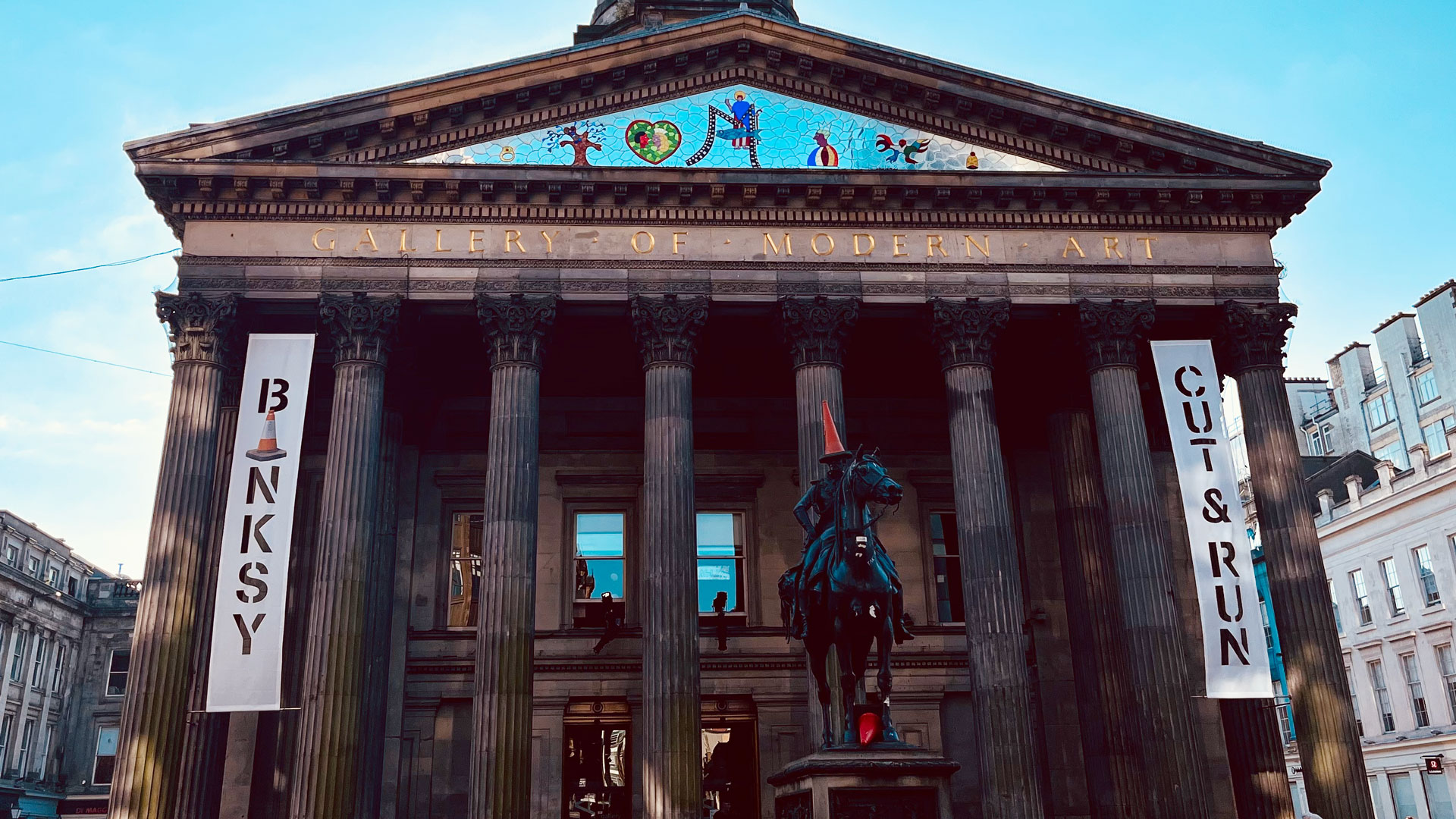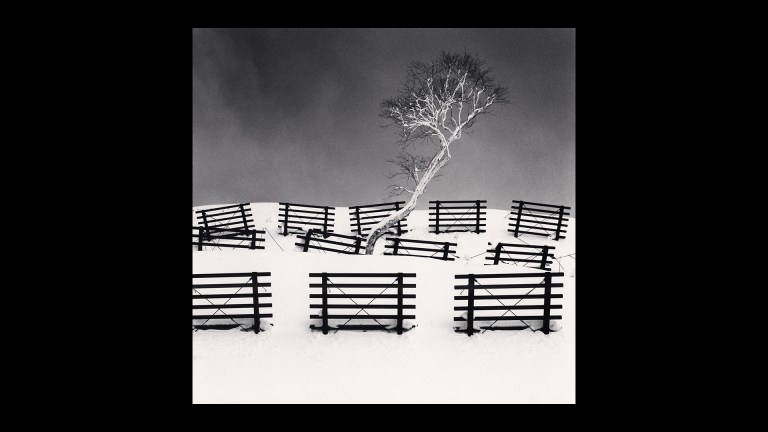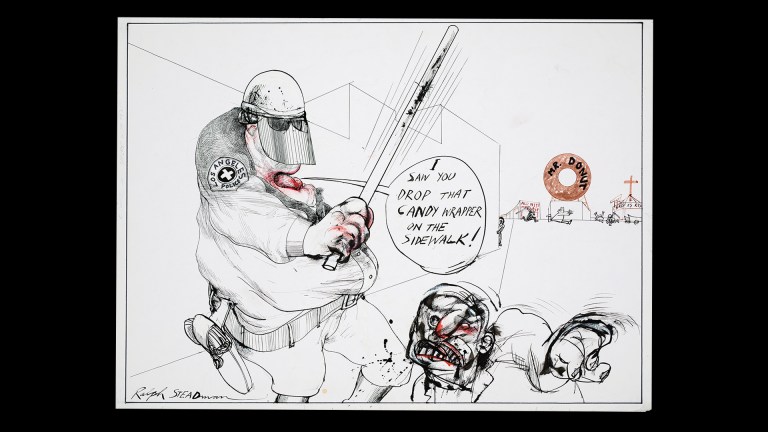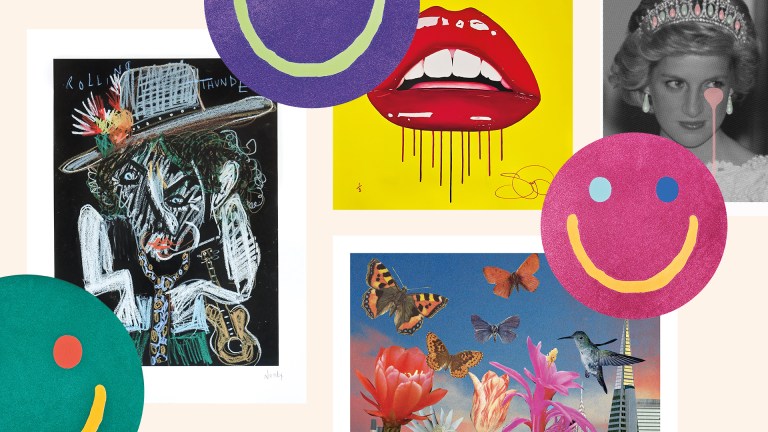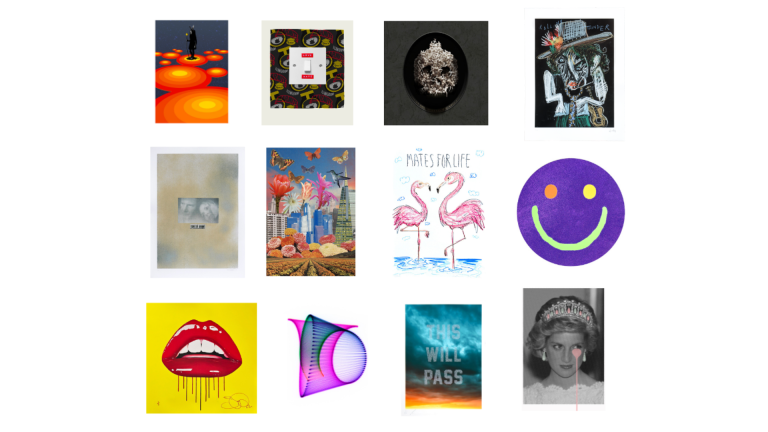“Most artists have an obsession that defines their work,” reads the message from Banksy on the wall of Glasgow’s city centre GoMA gallery. “Monet had light, Hockney has colour, I’ve got police response time.” Response time was key yesterday when the world’s most famous and celebrated graffiti artist announced his first solo show in 14 years. Cut & Run – 25 Years of Card Labour had been kept secret right up until the day tickets went on sale. The fast-fingered first members of the public who managed to snag tickets will go through the doors (their phones safely locked away to prevent spoilers) on Sunday.
Members of the press who were able to scramble to GoMA quickly were allowed through the doors and into Banksy’s world last night. Whether it was an attempt to get critics’ hearts pumping like his does when he’s breaking laws in the name of art, I can’t say. But for those of us able to snap up those few available places, revelation and adrenaline awaited.
Banksy’s last solo show was at Bristol Museum, chosen so the secretive artist could thank his hometown. Glasgow has been chosen, he tells us right at the start of the show, because it is home to his “favourite work of art in the UK”. He doesn’t mean Salvador Dali’s Christ of St John of the Cross, which resides in Kelvingrove gallery in the west end. Nor does he mean any of the contemporary work that graces Tramway’s walls in the south of the city. No – he’s referring to the traffic cone that perpetually rests atop the statue of the Duke of Wellington directly outside GoMA. The statue’s unplanned hat has long been a symbol of Glasgow’s renegade spirit, since “despite the best efforts of council and police, every time one is removed another takes its place.”
It’s not hard to see why Banksy would feel an affinity with that cone – it lives on the verge between creation and vandalism, overlaying a democratic and insurrectionist meaning over the establishment. Just like the best of what he does.
As the first exhibition ever to show the stencils Banksy uses to transform abandoned places, street corners, war zones and placards, Cut & Run is the closest we’ve come to seeing behind his mask. These cardboard relics – many of them also painted on to create new reinterpretations – are hung a foot or so off the walls and dramatically lit, their shadows play across their backdrops to form striking light-shapes. The effect is jaw-dropping. Yet for Banksy-watchers, it’s the storytelling that really raises the hairs on the back of your neck.
There’s the bus shelter he wanted to dent to make it look as though a painted pair of elderly dancers had damaged it in their enthusiasm. Failing in his first attempt to create the requisite indents, eventually he had to use a forklift truck.
